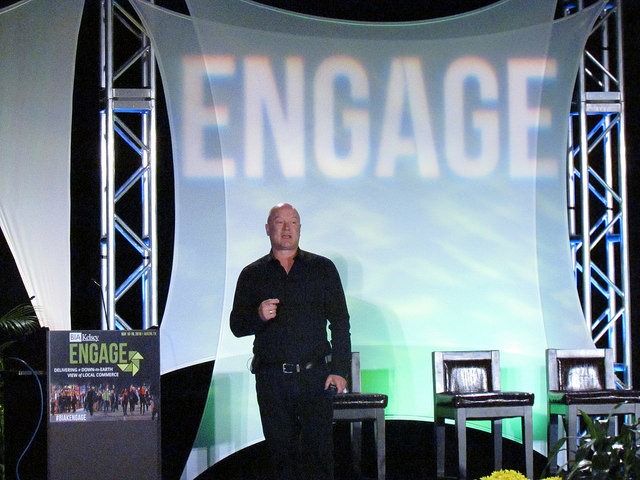When John Allan took the helm at Sensis in 2012, he inherited a print-focused, sales-driven directory organization that still rewarded its top sales performers with an annual international reward trip that cost the company millions of dollars, even in years when sales results were poor. The trip was a long tradition at Sensis. For many sales reps, it was the reasons they got up in the morning and hustled. The sales trip died a quick death once Allan took over. It was the first of many sacred cows to be slaughtered.
At last month’s BIA/Kelsey ENGAGE conference in Austin, Texas, Allan gave a candid and detailed account of the radical change effort he’s leading Sensis through. The effort was about ensuring the company’s survival – something far from assured on Allan’s first day on the job — and positioning it to transform into a sustainable fully digital business.
Today 60 percent of Sensis’s revenue comes from digital if you exclude the company’s very robust White Pages business, an anomaly unique to Australia. Including White Pages the ratio is closer to 50-50.
While Allan’s change effort has touched on all aspects of the organization, radically changing the sales force was the key to saving the company.
“The epiphany for me as CEO was, when we looked forward we understood that our print business was declining and we had an unsustainable sales model,” Allan said during his talk in Austin. “If we continued with the current cost behavior at the organization, Sensis in the future would potentially not exist. So we had to completely rethink how we went to market. And rethink our entire sales organization.”
The video below shows Allan’s entire presentation at ENGAGE, which includes details on how Allan changed the company’s culture, operating model and technology, with a special emphasis on changes to the sales organization, which is now much smaller and highly segmented.
Allan’s focus was to make the sales organization (and the company overall) less costly and more customer focused. Some of the drivers included shifting much more investment into service personnel vs sales personnel, focusing on servicing only the most profitable customers, while ever-greening the least profitable ones. And moving the entire organization, sales, service and product, in a verticalized direction.
The process is ongoing, but Sensis has already dramatically reduced its sales costs, which have allowed it to protect margins as its print revenues continue their secular decline. It has also seen a positive impact on churn from the shift to a more service oriented model. It’s NPS scores (now measured at every interaction) are rising and the company has a clear view on the profitability of each customer, something it didn’t have when Allan arrived in 2012. A big move has been to implement a new customer segmentation that used 14 factors to determine which channel to assign a customer. The factors include revenue, profitability, category, geography, life cycle and so on.
“For me, this was the biggest game changer for the sales organization,” Allan said.
The three plus year change process has been dramatic for Sensis. Allan estimated that 80 percent of the people who were there when he arrived are gone. Other companies that have undergone similar levels of change, including Solocal and Yellow Pages Canada, report similar levels of turnover. Allan makes the case that the radical change at Sensis was required to survive. The Sensis experience offers one possible template for other publishers at a similar stage to follow.
https://youtu.be/lcmxnB9pTqQ?list=PLhIyqmJIoRqqU9RcrvfO26Tes9KgcJ-M0

